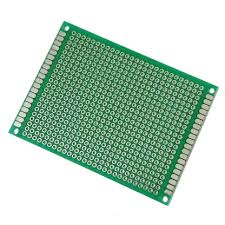Design for Manufacturability (DFM) is a technique used to produce PCB designs that can lower the expensive production cost by optimizing your designs according to manufacturing standards. DFM can help companies avoid costly mistakes, minimize raw material waste, and optimize the manufacturing process for cost-efficiency when applied at an early stage in a product's design cycle. DFM practices can reduce production costs by up to 25%, primarily through eliminating design iterations that lead to expensive rework (industry reports).
PCB DFM helps in reducing cost majorly by simplifying design parameters like trace width, component clearance and number of layers in a board. Since each additional layer increases the production cost by ~20%, every reduction in layer count can significantly reduce both material and assembly costs. Taken into consideration the DFM guidelines, designers are guided toward balancing function and cost to remain within the budget for PCB design such that PCB can be a very economical solution as well as high in quality.
Secondly, DFM helps in cutting back on costs that are directly associated with component selection. You also want to choose with longevity in mind, as engineers know all too well how last-minute substitutions can delay a project and cost serious cash. Redesigns may be required for components that are no longer stocked or too difficult to source, which can increase production costs by as much as 15%. DFM gives you access to high availability parts which helps to stabilize costs as well as prevent supply chain disruption and avoid delaying your production timeline.

For PCB design, thermal management is an important aspect in DFM. High-power components can overheat if heat dissipation solutions are not put in place, costing PCB life by up to 30%, and losing money through returns and warranty claims. DFM solutions encourage spacing and design layouts that permit elegant heat dissipation, which means there is little need for external parts such as heat sinks to provide additional cooling – an added factor in production costs.
Another important DFM cost-saving factor is design tolerances. Precision manufacturing is often needed to produce tight tolerances, which leads to higher defect rates and increased production costs. By standardizing tolerances to represent normal manufacturing capabilities, we increase the likelihood that errors will not occur and consequently reduce costs associated with manufacturing. Electronics industry research showed that relaxing overly tight tolerances reduced production costs by about ten percent and a good share of this saving came from avoiding unnecessary rework.
Designers can review DFM standards by utilizing tools like an online Gerber viewer to spot issues before they develop into expensive problems. An avatar for final PCB layout, a trustworthy Gerber viewer clears up that your design would be way of the manufacturing capabilities and thus benefits in cutting down production risks.
To summarize, pcb dfm is significant to avoid production cost by using design optimization, component selection, thermal analysis and tolerance checks & Balances. All of these strategies help minimize rework requirement, minimize costs on materials, and simplify the manufacturing process to ensure a fast yet cost-effective and seamless PCB fabrication cycle.